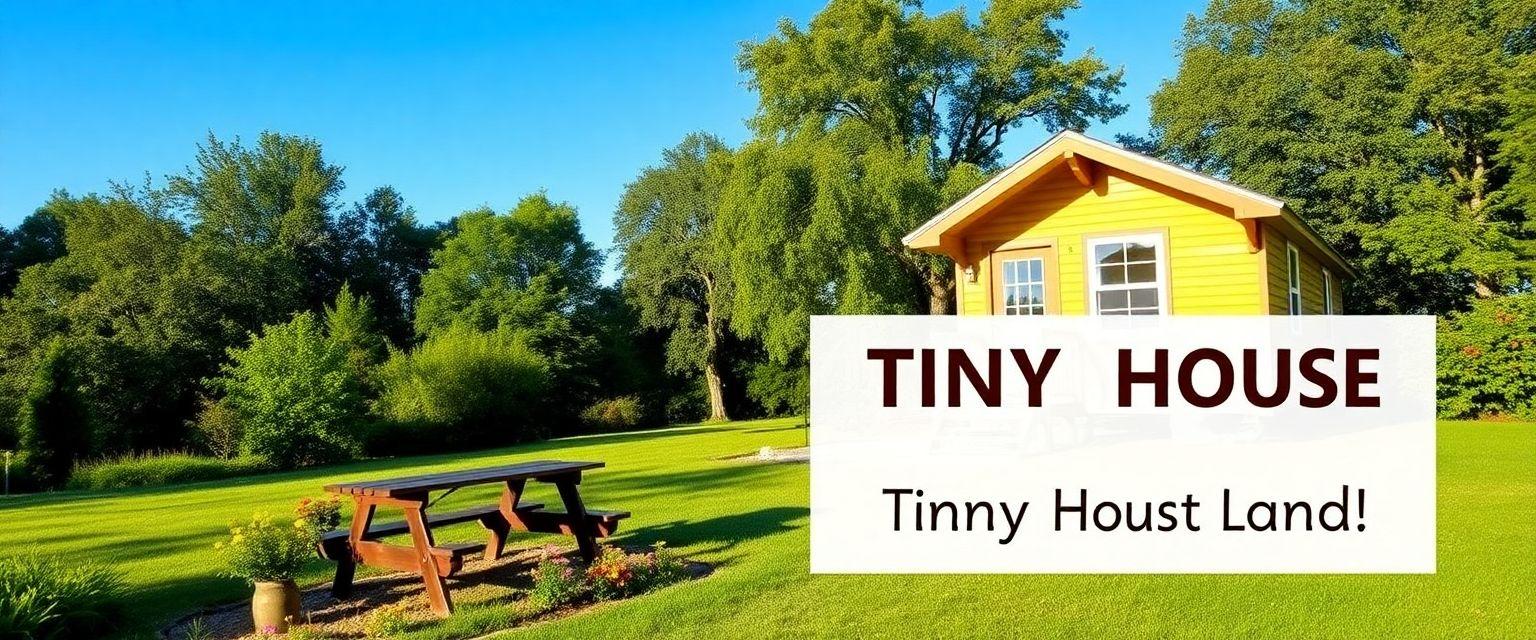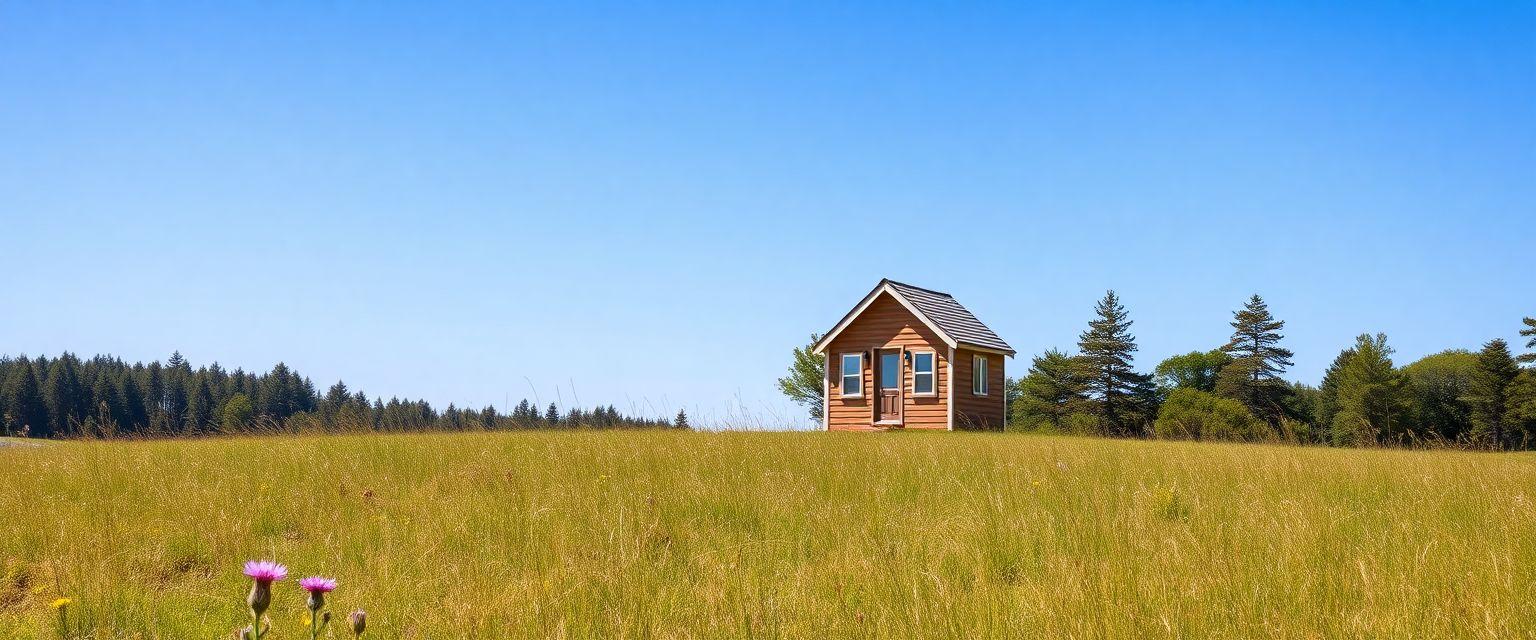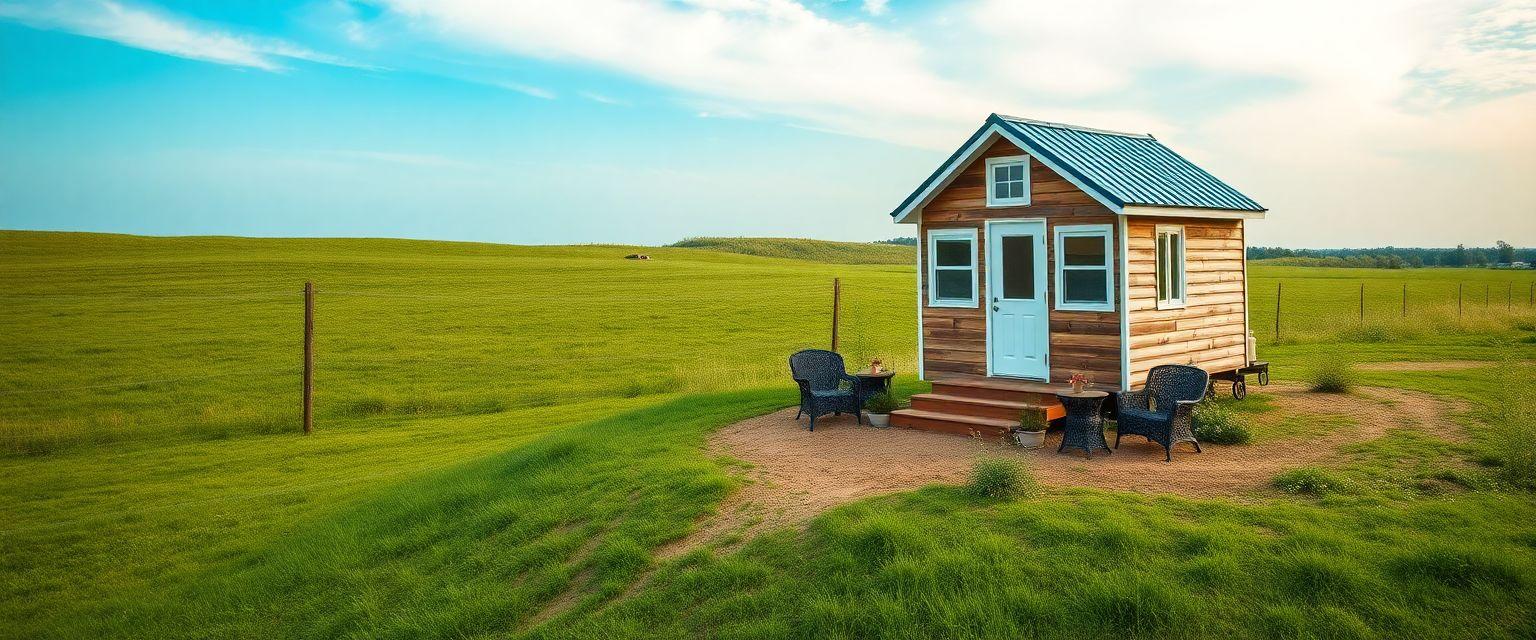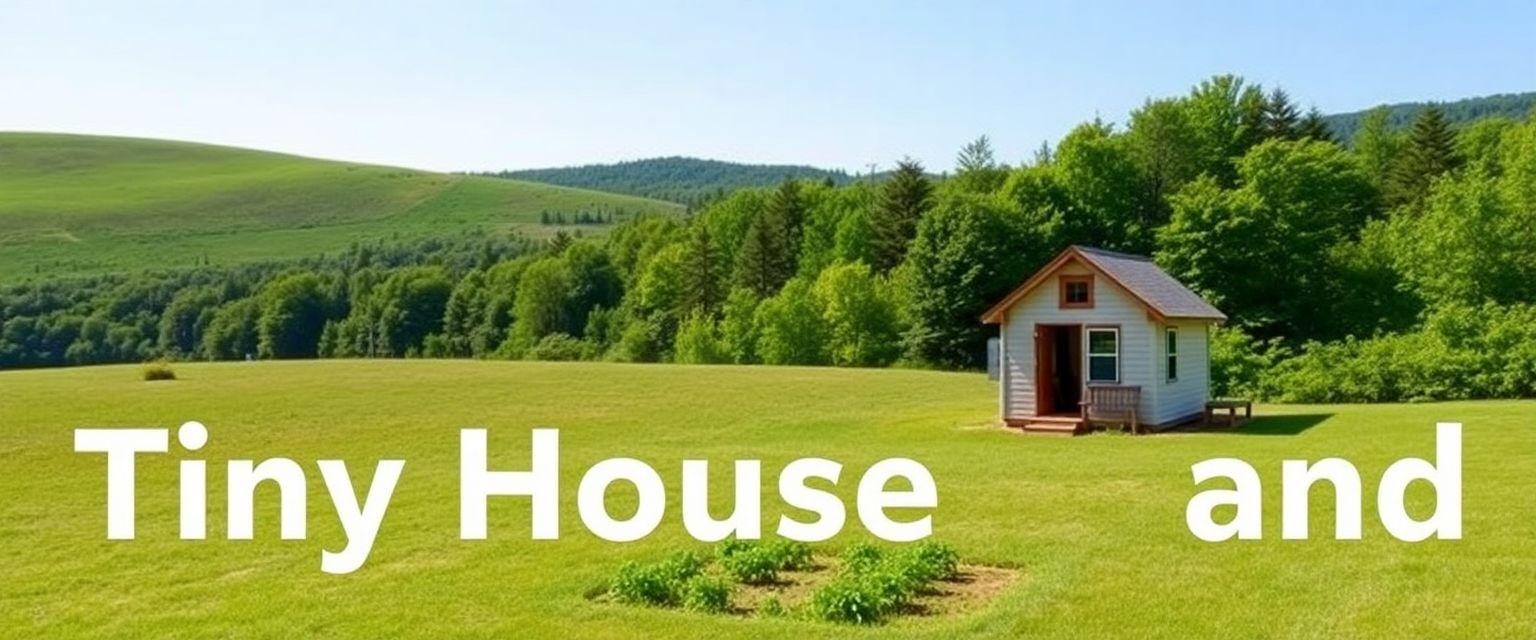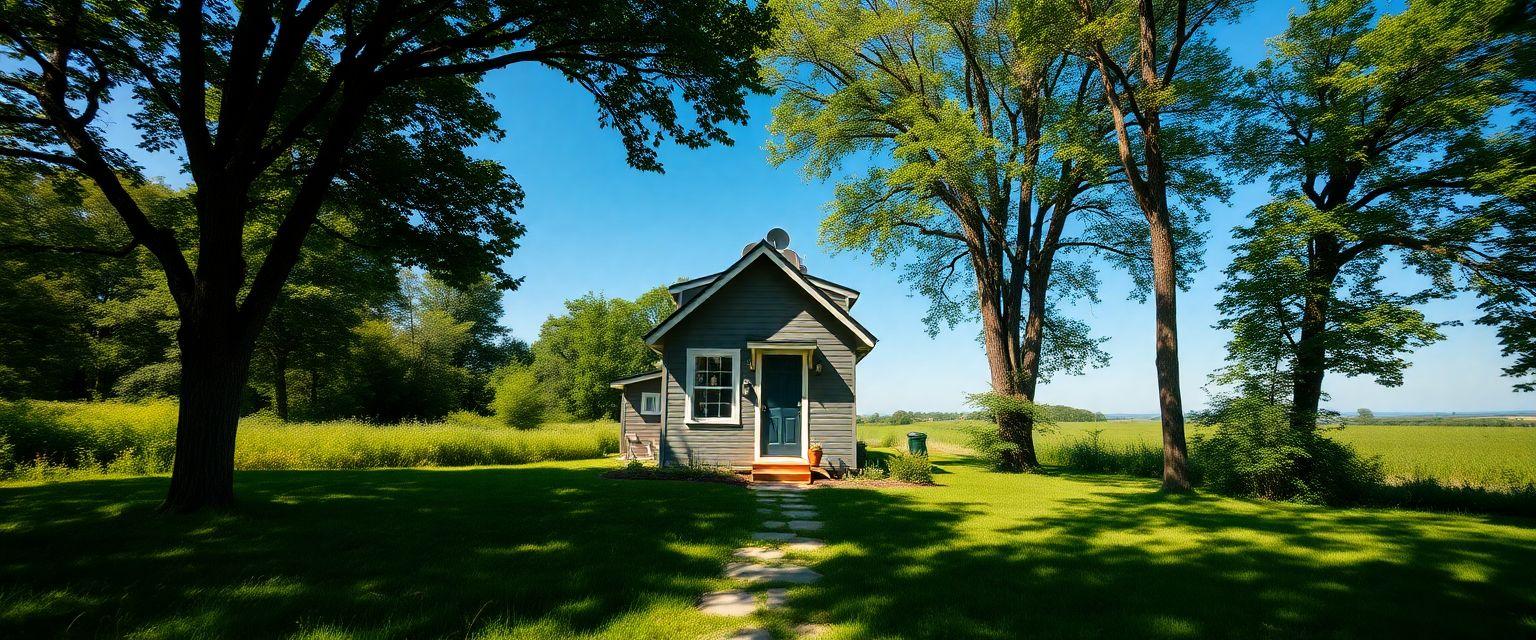Buy Land for Tiny House
Discover essential insights on purchasing land for a tiny house to make your dream lifestyle a reality.
– Learn about zoning laws and regulations that impact where you can place your tiny house, ensuring you comply with local rules.
– Find out the best types of land for tiny houses, including rural, suburban, and urban options, along with their pros and cons.
– Explore financial considerations, including cost factors and financing options available for tiny house land purchases.
Are you looking to buy land for a tiny house? The tiny house movement has gained significant traction over the past decade, encouraging individuals and families to downsize their living spaces and adopt a simpler lifestyle. This movement emphasizes minimalism, sustainability, and affordability, making it an attractive choice for many who wish to escape the traditional housing market. A crucial step in this journey is understanding how to navigate the land-buying process effectively.
In this guide, we’ll explore the essential aspects of purchasing land suited for tiny houses. You’ll gain insights into zoning laws, community living, and more. By the end, you will have valuable knowledge and resources to help you realize your tiny house dreams.
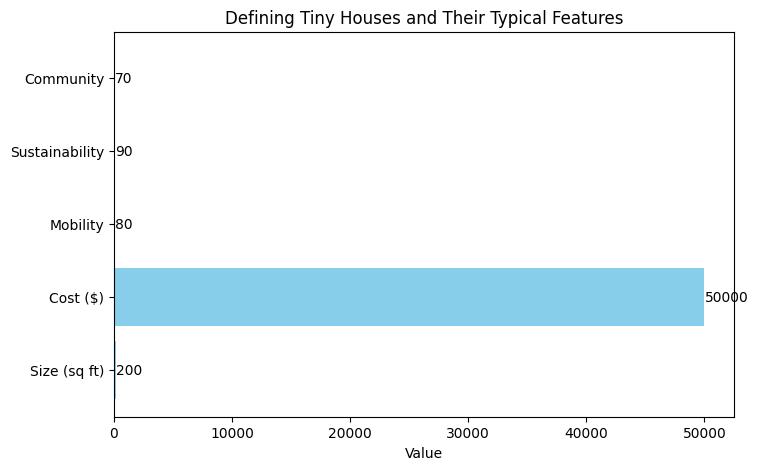
Understanding Tiny Houses
Definition of Tiny Houses
What qualifies as a tiny house? A tiny house typically measures less than 400 square feet. These homes can be mobile, on wheels, or stationary, built on foundations. Each type has unique advantages and challenges, allowing individuals to choose what best fits their lifestyle.
Mobile tiny houses offer the freedom to travel and relocate while maintaining a minimalist lifestyle. In contrast, stationary tiny houses allow for customization and can be anchored to specific land, ideal for those who want to establish roots. Understanding these distinctions is vital when deciding where to buy land for your tiny house.
Benefits of Living in a Tiny House
Living in a tiny house offers many benefits, including:
- Sustainability : Tiny houses are often more energy-efficient than traditional homes, reducing environmental impact. Many owners use solar panels and sustainable materials, contributing to a greener planet.
- Minimalism : Embracing a tiny lifestyle encourages decluttering and focusing on experiences rather than possessions, leading to increased happiness.
- Cost Savings : Tiny houses significantly lower living expenses, from mortgage payments to utility bills, allowing individuals to invest in travel, hobbies, or savings.
- Mobility : Mobile tiny houses provide flexibility to travel while enjoying a comfortable living space, enabling unique experiences.
Many tiny house enthusiasts share personal stories highlighting the lifestyle benefits. For example, Jane, a tiny house owner from Oregon, shared, “Living in my tiny house has freed me from financial stress. I can now travel and enjoy life without being tied down by a mortgage.” Such experiences offer practical insights for potential tiny house buyers.
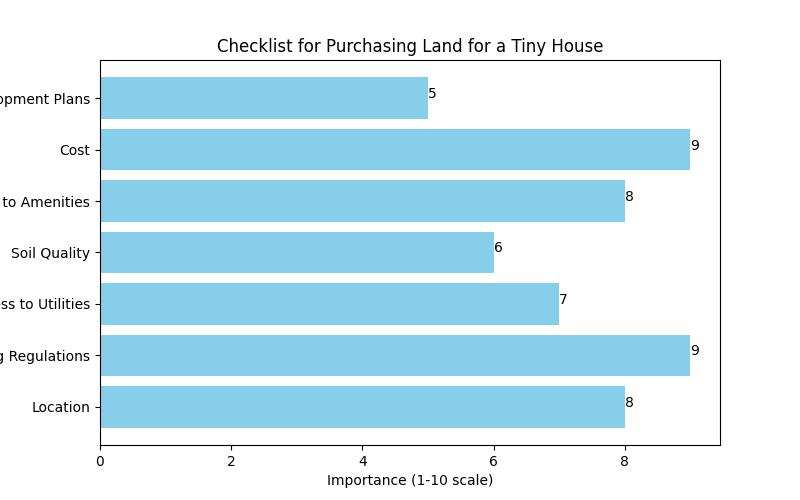
Essential Factors When Buying Land for a Tiny House
Zoning Laws and Regulations
Understanding zoning laws is crucial when considering land for your tiny house. Zoning regulations dictate land use, including whether tiny houses are allowed. These laws vary significantly by location, so conducting thorough local research is essential.
For instance, in California, certain areas may permit tiny houses on foundation, while others only allow mobile tiny houses in RV parks. Consulting with local real estate experts can provide clarity on specific regulations in your desired area.
Consider these zoning classifications:
- Residential zoning: Allows traditional homes and may include tiny houses, but often requires compliance with local building codes.
- Agricultural zoning: May permit tiny houses on farms or in rural areas, typically with certain restrictions.
- RV parks: Some tiny houses qualify as recreational vehicles, allowing placement in designated RV parks. Understanding regulations in these areas is essential.
Always check local regulations to ensure your tiny house complies. This step can save you time, money, and frustration later.
Land Use Types
When looking for land for your tiny house, understanding the different land use types is essential. Heres a breakdown:
- Rural land: Often more affordable and spacious, rural land offers ample opportunities for tiny house living but may lack amenities.
- Suburban land: Balances urban conveniences with a quieter lifestyle. Suburban areas may have zoning restrictions that impact tiny house placements.
- Urban land: Prices tend to be higher, but urban land provides access to a vibrant community and essential services. However, finding suitable zoning for tiny houses in urban areas can be challenging.
Consider the land size and layout. A larger parcel may offer more privacy and space for gardens or outdoor areas, while a smaller lot may require careful planning.
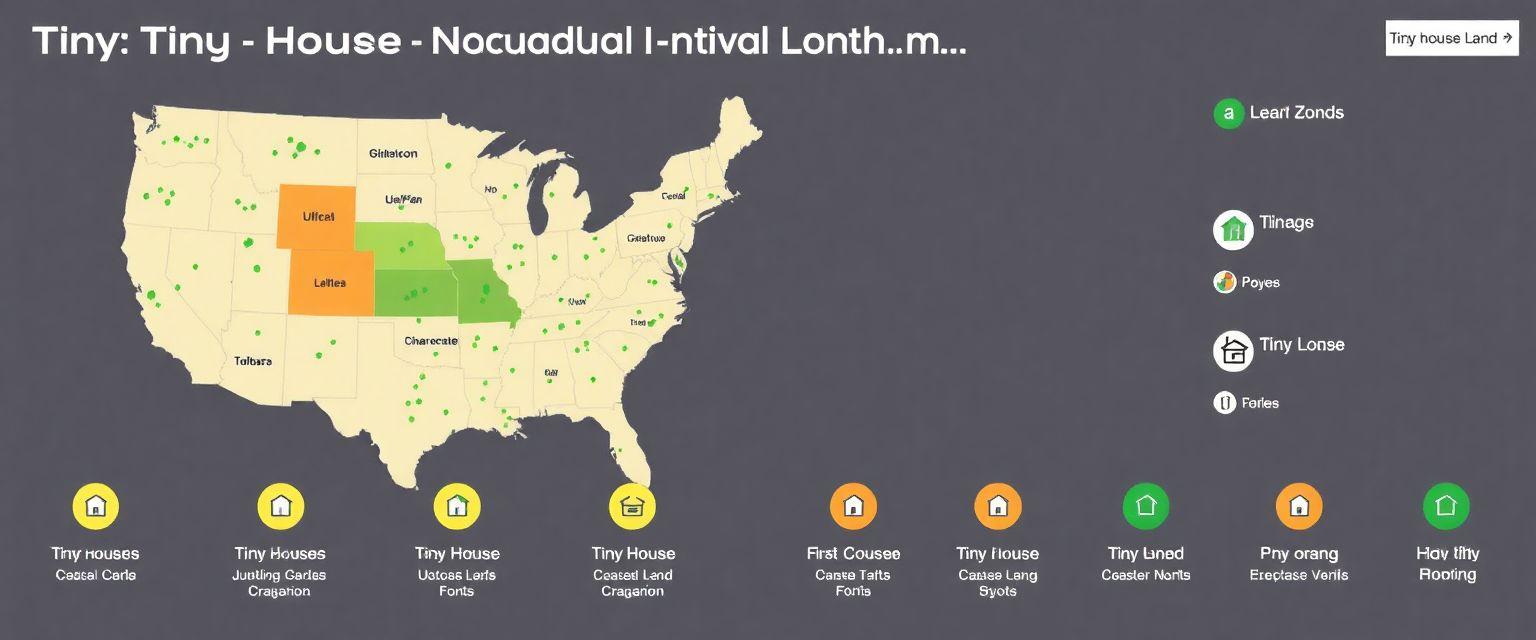
Finding Suitable Land for a Tiny House
Online Resources
The internet is a valuable tool for finding land to buy for a tiny house. Here are popular websites to help you find suitable properties:
- Zillow: A comprehensive real estate platform that allows users to filter searches for land by size and price.
- LandWatch: Specializes in rural properties and land listings, making it an excellent resource for tiny house enthusiasts.
- Tiny House Listings: This site caters specifically to the tiny house community, offering listings of land suitable for tiny homes and tiny houses for sale.
When using these platforms, apply effective filtering techniques. Search for keywords like “tiny house friendly” or “mobile home allowed” to narrow your results.
Working with Real Estate Agents
While online resources are helpful, working with a real estate agent who specializes in tiny house land purchases can be invaluable. Benefits of hiring an agent include:
- Expertise: Specialized agents understand the unique needs of tiny house buyers, including zoning laws and community norms.
- Access to Listings: Agents often have access to off-market properties, broadening your options.
- Negotiation Skills: An experienced agent can help you negotiate the best price and terms, streamlining the purchasing process.
When looking for a real estate agent, seek those with experience in tiny house transactions. Ask about their familiarity with local regulations and past successful tiny house deals.
Assessing Land for Tiny House Suitability
Location Considerations
Choosing the right location for your tiny house is vital. Proximity to amenities can significantly impact your quality of life. Consider these factors:
- Access to Schools and Hospitals: If you have children or may need medical care, being near schools and hospitals is crucial.
- Grocery Stores and Shopping: Convenience stores and markets should be nearby to simplify your daily life.
- Community Engagement: Research the local community to ensure it aligns with your lifestyle values. Engaging with neighbors and local organizations can enhance your experience.
Also, consider the climate of the area. Ideal weather varies by preference, but understanding seasonal impacts, like heavy snowfall or extreme heat, is essential for tiny house living.
Land Features
When evaluating land for a tiny house, consider these features:
- Water Access : Ensure reliable access to water sources, whether through municipal services or well systems.
- Soil Quality : Good soil quality is vital for gardening or landscaping plans. Conduct soil tests to determine viability for planting.
- Topography : The land’s slope and elevation can affect construction and drainage. Flat land is generally easier to build on, while hilly terrain may require extra planning.
Conducting a land survey and soil tests before purchase is vital. These assessments help identify potential issues impacting your tiny house build.
Financial Considerations for Buying Land
Cost of Land
The cost of land varies significantly based on location and size. Heres what to expect:
- Urban Areas: Prices are usually higher due to demand, but smaller lots may be tiny house-friendly.
- Suburban Areas: Costs are moderate, balancing affordability and access to amenities.
- Rural Areas: Often the most affordable option, rural land offers larger parcels at lower prices, but may come with limited services.
Factors influencing pricing include location, land size, and accessibility. Research local markets to understand current trends and pricing in your desired area.
Financing Options
Understanding your financing options is crucial when buying land for a tiny house. Common methods include:
- Loans: Some lenders offer loans specifically for land purchases. Research lenders familiar with tiny house financing.
- Cash Purchases: If possible, buying land outright simplifies the process and eliminates interest costs.
- Land Contracts: In some cases, sellers may offer financing options through land contracts, allowing payments over time.
Explore government programs or grants that support tiny house buyers. These resources can provide financial assistance or favorable loan terms.
Legal Considerations When Buying Land
Permits and Approvals
Before building your tiny house, obtaining the necessary building permits is essential. The process varies by local regulations but generally involves:
- Submitting Plans: Submit your tiny house design and plans to the local building department for review.
- Inspections: Be prepared for inspections throughout the building process to ensure compliance with local codes.
If your tiny house will use a septic system, obtaining a permit for that system is crucial. Consult local authorities to understand the specific requirements in your area.
Land Use Agreements
Before finalizing your land purchase, review any existing land use agreements or restrictions. Understanding what is allowed on the property and any limitations is essential.
Carefully reviewing contracts and agreements before signing is crucial. Seek legal advice if you have concerns or questions about the terms.
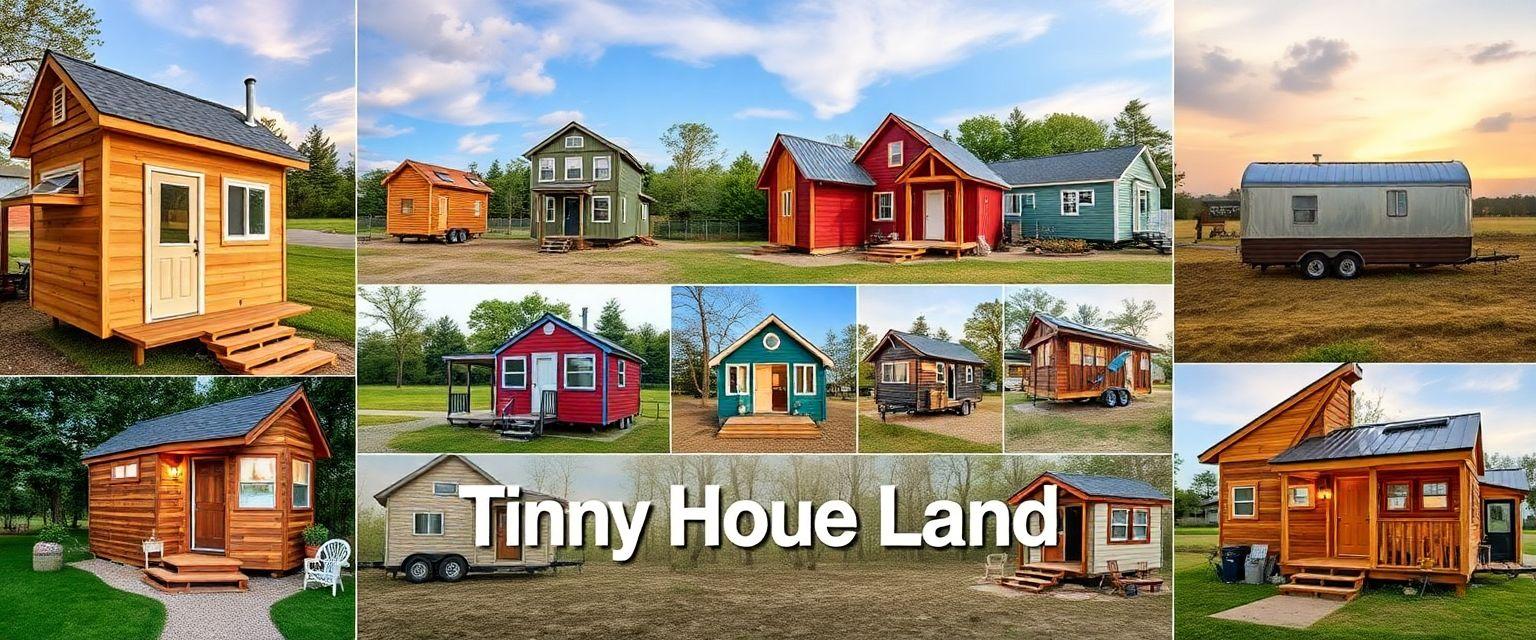
Community and Lifestyle Factors
Tiny House Communities
One appealing aspect of the tiny house movement is the chance to live in a tiny house community. These communities offer various benefits, such as:
- Shared Resources: Residents often share communal spaces, tools, and amenities, lowering individual costs and fostering belonging.
- Support Network: Living among like-minded individuals creates a supportive environment for exchanging ideas and experiences.
Successful tiny house communities, like Tiny House Village in Washington State and EcoVillage in Ithaca, NY, exemplify the potential of communal living.
Building Relationships with Neighbors
Engaging with your neighbors is essential for a fulfilling tiny house experience. Here are tips for fostering good relationships :
- Participate in Community Events: Attend local gatherings, meetings, or volunteer opportunities to connect with neighbors.
- Create a Communication Channel: Establish a group chat or online forum for residents to share information, ask questions, and coordinate events.
- Be Respectful and Considerate: Respect neighbors’ boundaries and preferences, and approach conflicts with open communication.
Building a sense of community can enhance your tiny house living experience and contribute to a positive atmosphere.
Personal Stories: Embracing the Tiny House Lifestyle
A Life-Changing Decision
When I first heard about the tiny house movement, I was immediately intrigued. As a single mother living in a sprawling four-bedroom house in suburban Ohio, I often felt overwhelmed by the clutter and responsibilities that came with a larger home. After some research, I decided to downsize to a tiny house, which would not only simplify my life but also provide a more sustainable lifestyle for my daughter, Emma.
Finding the Right Land
I quickly learned that finding the right land for my tiny house was crucial. After a few weeks of searching online, I stumbled upon a lovely piece of rural land just outside of Columbus. It was a 1-acre plot nestled between a vibrant community garden and a small creekperfect for our tiny home. However, I learned that the zoning regulations in the area allowed for tiny houses only if they were built on foundations rather than as mobile units.
The Journey to Community
I reached out to local officials and did my due diligence on the areas zoning laws. It was an uphill battle, but I eventually secured the necessary permits. I also discovered a nearby tiny house community that welcomed new residents. Moving there transformed my experience; I found support from like-minded individuals who shared advice on building and living sustainably.
A New Beginning
Today, Emma and I live comfortably in our 300-square-foot home, surrounded by nature and a supportive community. The experience taught me the importance of researching land options and understanding local regulations. My tiny house journey has not just been about downsizing physical space; it has allowed us to embrace a more intentional and fulfilling way of living.
Preparing for Your Tiny House Build
Choosing the Right Builder
If you hire a builder for your tiny house, selecting the right one is crucial. Here are tips for finding the ideal builder:
- Check References: Ask for references from previous clients to gauge the builder’s workmanship and reliability.
- Review Previous Work: Look at the builder’s portfolio to ensure their style aligns with your vision.
- Get Multiple Quotes: Compare quotes from different builders to find the best fit for your budget.
If you prefer a DIY approach, research building plans and resources to guide you through the construction process.
Utilities and Infrastructure
Connecting your tiny house to essential utilities and infrastructure is vital during the building process. Consider these options:
- Water Supply: Determine whether to connect to municipal water or install a well. Ensure a reliable water source before moving in.
- Electricity: Explore options for grid connection or consider going off-grid with solar panels or alternative energy sources.
- Waste Disposal: Research local regulations regarding waste disposal, including septic systems or composting toilets.
Understanding your utility options will help you plan your tiny house build effectively.
Additional Considerations for Tiny House Land Purchases
Environmental Impact
One appealing aspect of tiny houses is their environmental impact. Tiny houses often promote land conservation and sustainable living practices. By using fewer resources and occupying less land, tiny house owners can contribute to a healthier planet.
Future Trends in Tiny Housing
The tiny house movement continues to evolve. Here are some anticipated developments:
- Eco-Villages: More communities are forming around shared values of sustainability and minimalism, offering cooperative living solutions.
- Innovative Designs: Expect to see more creative designs and building techniques that maximize space and energy efficiency.
Common Mistakes to Avoid
When buying land for a tiny house, avoid these common pitfalls:
- Neglecting Research: Failing to research local zoning laws and land use regulations can lead to costly mistakes.
- Overlooking Utilities: Verify utility access before purchasing land; do not assume availability.
- Ignoring Community Dynamics: Understanding the local communitys culture and values is essential for ensuring a good fit.
Thorough research and due diligence will help you navigate the complexities of buying land for your tiny house.
| Topic | Key Points |
|---|---|
| Choosing the Right Builder | – Check references from previous clients. – Review builder’s portfolio. – Get multiple quotes. |
| Utilities and Infrastructure | – Determine water supply options (municipal vs. well). – Explore electricity options (grid vs. off-grid). – Research waste disposal regulations. |
| Group Land Purchases | – Shared ownership can lower costs. – Collaborative living enhances community experiences. |
| Forming a Tiny House Community | – Host brainstorming sessions to discuss goals. – Outline community values and rules. – Draft legal agreements for ownership and responsibilities. |
| Engaging in Collaborative Efforts | – Set clear expectations for community living. – Encourage participation in decision-making. – Foster open communication among residents. |
Collaborative Land Purchasing for Affordable Tiny House Living
Group Land Purchases
An innovative approach to making tiny house living more affordable is through group land purchases. By pooling resources with others interested in tiny house living, you can significantly reduce costs. Heres how:
- Shared Ownership: A group can collectively purchase a larger parcel of land, dividing responsibilities and expenses.
- Collaborative Living: Shared resources, such as gardens or communal spaces, can enhance the living experience and foster community.
Forming a Tiny House Community
If you’re considering forming a tiny house community, follow these steps:
- Brainstorming Sessions: Gather interested individuals to discuss shared goals and visions for the community.
- Vision Planning: Outline the community’s values, rules, and design elements for a cohesive living environment.
- Legal Agreements: Consult legal professionals to draft agreements outlining ownership, responsibilities, and conflict resolution.
Examples of successful collaborative efforts can provide inspiration and guidance as you embark on this journey.
Engaging in Collaborative Efforts
Successful collaborative living requires strong communication and cooperation among community members. Here are tips for fostering a supportive environment:
- Set Clear Expectations: Establish guidelines for community living to ensure everyone is on the same page.
- Encourage Participation: Create opportunities for residents to engage in community decision-making and activities.
- Foster Open Communication: Encourage residents to voice concerns and share ideas for a harmonious living environment.
By prioritizing communication and collaboration, you can create a thriving tiny house community.
Conclusion
Buying land for a tiny house involves careful consideration of various factors, from zoning laws to community dynamics. This guide has provided valuable insights into the process, equipping you with the knowledge needed to make informed decisions.
As you embark on your journey toward affordable tiny house living, consider exploring local tiny house communities and connecting with like-minded individuals. For further information, check out resources from organizations like the American Tiny House Association or local real estate websites. Take the first step today and start envisioning your new lifestyle!
With over a decade of experience in sustainable living and real estate, the author is a recognized expert in the tiny house movement. They hold a Masters degree in Urban Planning from the Massachusetts Institute of Technology, where their thesis focused on zoning laws and sustainable communities. Their research has been published in reputable journals such as the Journal of Housing and the International Journal of Urban and Regional Research, providing valuable insights into land use and community development.
The author has collaborated with organizations like the Tiny House Alliance and has been a keynote speaker at various tiny house expos across the country. Their practical knowledge is complemented by a certification in Sustainable Land Development from the American Planning Association, ensuring a well-rounded perspective on the challenges and opportunities of tiny house living. Through a combination of personal stories and expert advice, the author aims to guide readers on their journey to embracing a minimalist lifestyle.





